ASUS A88X-Pro Review: Kaveri, Kaveri, Quite Contrary
by Ian Cutress on April 22, 2014 11:59 AM EST- Posted in
- Motherboards
- AMD
- Asus
- Kaveri
ASUS A88X-Pro Software
The idea behind manufacturer based OS software is multi-faceted: it has to provide the options similar to the BIOS but in an easier to use way. Because the manufacturer now has the full scope of graphical prowess that is afforded by the operating system, it has to look good and work smoothly. The more features a motherboard manufacturer decides to add to their software stack, the more effort has to go in to developing and testing the visuals around such options. ASUS’ software goes by the AI Suite name, and has been attached to ASUS software for several generations. The latest incantation, AI Suite III, came to pass during the Z87 release and moved to a Java based platform rather than Flash.
ASUS’ software revolves around their Dual Intelligent Processors 4 platform. This is the combination of the TPU and EPU alongside the fan controls and digital power delivery to create ‘4-Way Optimization’:
From this initial screen the user can see the CPU sensors, the fan profiles, the CPU power and choose from several presets for energy conserving or performance. The button on the left offers an automatic test based on environment and usage – it will go through each of the four ways in turn (TPU, EPU, Digi+ Power, Fans) and attempt to optimize for temperature, CPU frequency and power consumption. As a result, we get something like this:
Each of the four sections can also be manually configured. For CPU overclocks, the TPU menu offers frequency and voltage adjustments:
The EPU menu gives each of the four presets on the front page (Auto, High Performance, Max Power Saving, Away Mode) and allows users to adjust features like time-to-sleep or aggressive power saving.
DIGI+ Power Control offers access to the load line calibrations for the system and improving the headroom of the power delivery above defaults. Fan Xpert 2 allows users to test fans to find how RPM varies with power applied and then implement this into the fan profiles:
There are also several presets for fans, including Silent, Turbo and Full Speed. Users can ask the system to probe the fans power response and update the fan profiles automatically.
Slightly hidden away from the initial screen are the rest of AI Suite’s functions. By clicking the icon on the top navigation bar, next to the question mark, we get access to AI Charger+, USB 3.0 Boost, EZ Update, Network iControl, System Information, USB BIOS Flashback, USB Charger+ and Remote Go!. We have covered these features in previous reviews, but here is a brief overview:
AI Charger+: Quick Charging of BC1.1 compliant devices
USB 3.0 Boost: Offers an additional speed for Windows 7 USB 3.0 devices by implementing an updated driver on-the-fly.
EZ Update: Software to allow updates to the system, primarily drivers, software and BIOS. I can now confirm that it works and offers updates.
Network iControl: Software implementation for network data prioritization.
USB BIOS Flashback: Converts the appropriate BIOS to the correct format for USB BIOS Flashback.
USB Charger+: Quick charging of a single device via USB 3.0 by disabling data transfer and increasing power delivery.
Remote Go!: Home cloud computing for media, files, remote desktop and so on.


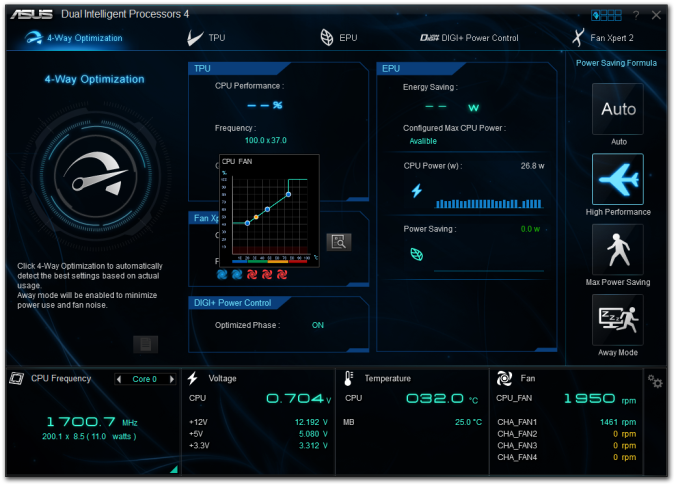
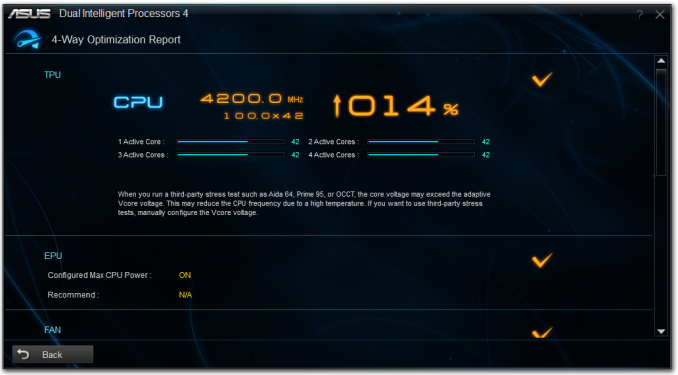
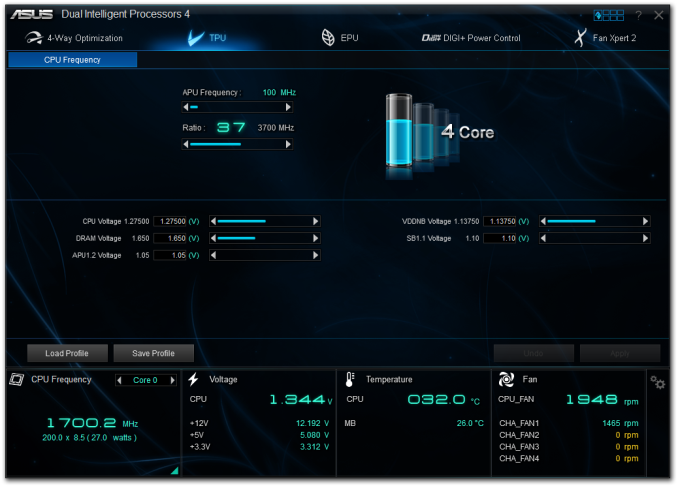
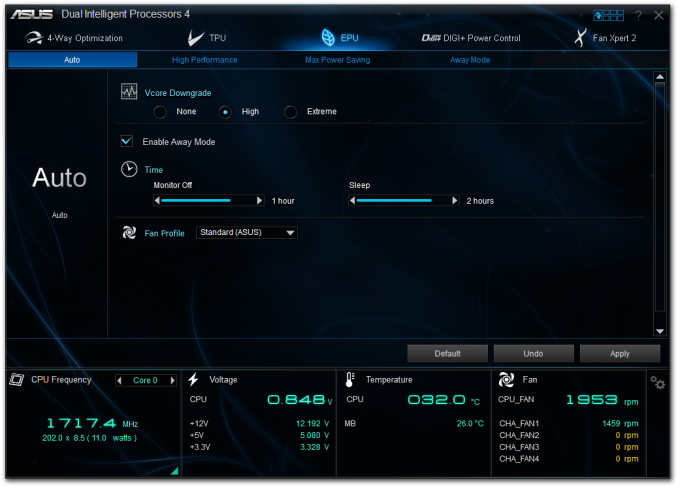
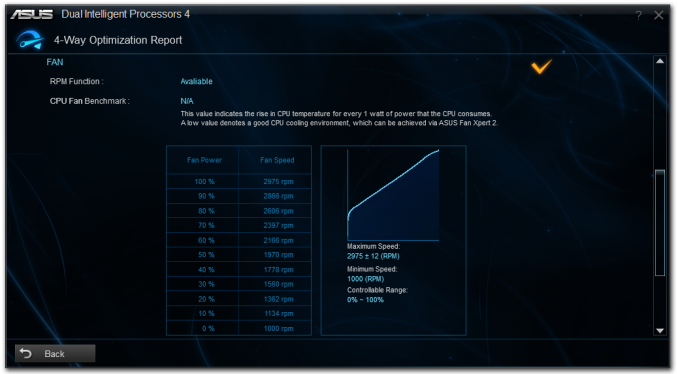
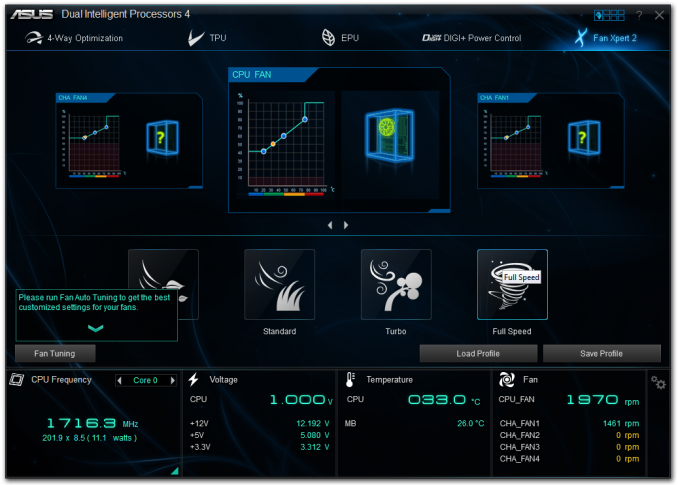














34 Comments
View All Comments
Antronman - Tuesday, April 22, 2014 - link
It's Asus.Of course it's going to be recommended.
Every fool knows Asus is #1
yannigr - Tuesday, April 22, 2014 - link
And those who are not fools? What do they think about ASUS? :PHanzNFranzen - Wednesday, April 23, 2014 - link
lol!! =)Yorgos - Tuesday, April 22, 2014 - link
I am really happy with asrock extreme6+, which packs more features+1 64 Mbit Flash ROM (awesome feature)
+1 HDMI (4 monitors in total)
-1 eSata (instead of 2 on the asus)
-2 usb2.0
+1 Sata
+ power and reset buttons (f* great feature)
+ doesn't make you look like a pimp with gold teeth
+Wake on LAN
+ cheaper for around 20 € in my country than the asus
In my opinion you CANNOT beat those feature with a better price and better benchmarks.
That's why I never read the conclusions, If I wanted an opinion I could ask also my dog, both of them have the same value.
Alexvrb - Tuesday, April 22, 2014 - link
What about PWM (4-pin) fan headers? If I was in the market for this kind of board, this A88X Pro would be the one I'd get, just because of its abundance of 4-pin connectors (5 of them). Most ATX A88X boards have... 3? With maybe one or two 3-pins to go with them. Yeah, you can get splitters (better get well-made ones) but then you can only monitor the speed of one of the connected fans per motherboard header.Antronman - Wednesday, April 23, 2014 - link
Yeah.And it's ASUS quality.
Alexvrb - Wednesday, April 23, 2014 - link
Which, most of the time, means it's good. I've been burned over the years by most of the major manufacturers at least once, including Asus. Sometimes it's a hardware/design issue, sometimes it's software/firmware. On occasion it was a problem with the chipset itself, and not entirely the manufacturers fault. About the most solid boards I used were by Epox, hilariously enough.But yes, overall I'd consider Asus to generally produce good boards, particularly if you're buying one of their "premium" models.
tuklap - Friday, April 25, 2014 - link
I just hope Asrock placed anti surge ic's and esd protections :(just4U - Tuesday, April 22, 2014 - link
In my opinion none of this matters until they finally release the A8- 7X series processors. Don't know about the rest of you but I've been eyeing it for multiple builds simply because of it's price/performance ratio. I'd expected it to be release already.HiTechObsessed - Tuesday, April 22, 2014 - link
My problem with these APUs is something like the A10-7850k costs $180, or you can get the 750k for $80, and a 7770 GHz for $100 and blow the 7850k out of the water in performance. APUs don't make sense on large boards like this when you can pair the same CPU up with a dedicated GPU and get much more gaming power.